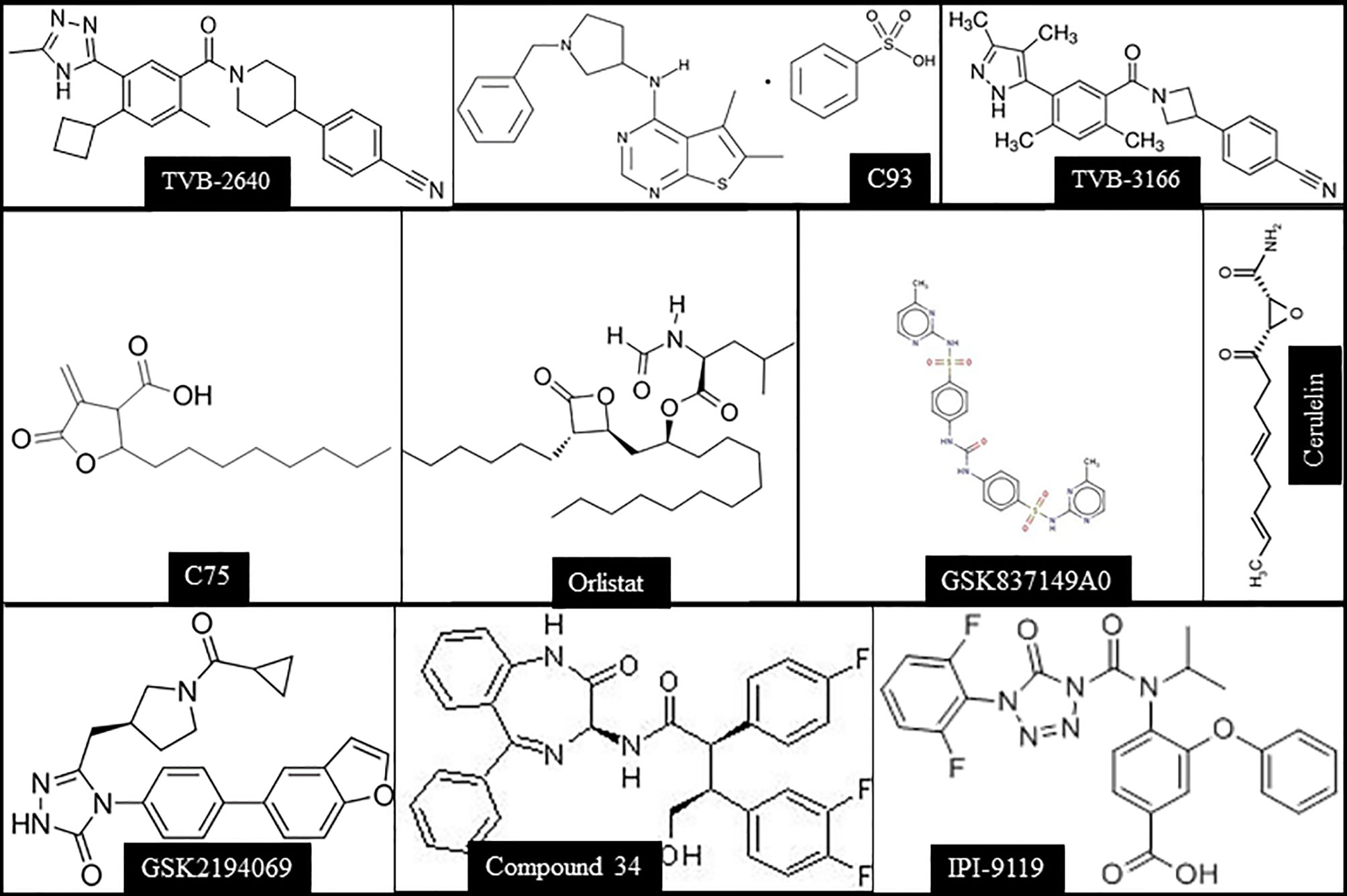
94% of researchers rate our articles as excellent or good
Learn more about the work of our research integrity team to safeguard the quality of each article we publish.
Find out more
CORRECTION article
Front. Oncol., 12 April 2022
Sec. Cancer Metabolism
Volume 12 - 2022 | https://doi.org/10.3389/fonc.2022.874053
This article is part of the Research TopicTumor Cell Metabolism and Autophagy as Therapeutic TargetsView all 17 articles
This article is a correction to:
Pathogenetic, Prognostic, and Therapeutic Role of Fatty Acid Synthase in Human Hepatocellular Carcinoma
A Corrigendum on:
Pathogenetic, Prognostic, and Therapeutic Role of Fatty Acid Synthase in Human Hepatocellular Carcinoma
By Che L, Paliogiannis P, Cigliano A, Pilo MG, Chen X and Calvisi DF (2019). Front. Oncol. 9:1412. doi: 10.3389/fonc.2019.01412
In the original article, there was a mistake in Figure 3 as published. Specifically the structure of Orlistat was incorrect. The corrected Figure 3 appears below.

Figure 3 Chemical structures of the main FASN inhibitors tested in preclinical and clinical studies.
The authors apologize for this error and state that this does not change the scientific conclusions of the article in any way. The original article has been updated.
All claims expressed in this article are solely those of the authors and do not necessarily represent those of their affiliated organizations, or those of the publisher, the editors and the reviewers. Any product that may be evaluated in this article, or claim that may be made by its manufacturer, is not guaranteed or endorsed by the publisher.
Keywords: hepatocellular carcinoma, de novo lipogenesis, FASN, tumor metabolism, precision medicine
Citation: Che L, Paliogiannis P, Cigliano A, Pilo MG, Chen X and Calvisi DF (2022) Corrigendum: Pathogenetic, Prognostic, and Therapeutic Role of Fatty Acid Synthase in Human Hepatocellular Carcinoma. Front. Oncol. 12:874053. doi: 10.3389/fonc.2022.874053
Received: 11 February 2022; Accepted: 24 March 2022;
Published: 12 April 2022.
Edited and reviewed by:
Carlos Pérez-Plasencia, National Autonomous University of Mexico, MexicoCopyright © 2022 Che, Paliogiannis, Cigliano, Pilo, Chen and Calvisi. This is an open-access article distributed under the terms of the Creative Commons Attribution License (CC BY). The use, distribution or reproduction in other forums is permitted, provided the original author(s) and the copyright owner(s) are credited and that the original publication in this journal is cited, in accordance with accepted academic practice. No use, distribution or reproduction is permitted which does not comply with these terms.
*Correspondence: Xin Chen, eGluLmNoZW5AdWNzZi5lZHU=; Diego F. Calvisi, Y2FsdmlzaWRAdW5pc3MuaXQ=
†These authors have contributed equally to this work
Disclaimer: All claims expressed in this article are solely those of the authors and do not necessarily represent those of their affiliated organizations, or those of the publisher, the editors and the reviewers. Any product that may be evaluated in this article or claim that may be made by its manufacturer is not guaranteed or endorsed by the publisher.
Research integrity at Frontiers

Learn more about the work of our research integrity team to safeguard the quality of each article we publish.